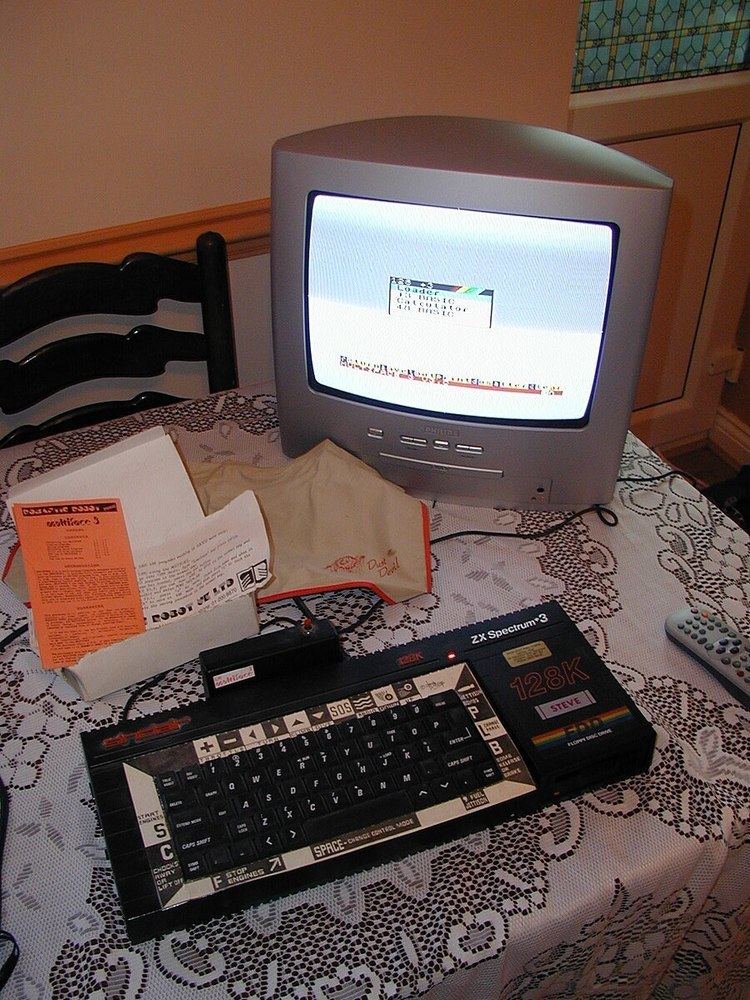 | ||
The Multiface was a hardware peripheral released by Romantic Robot UK Ltd. for several 1980s home computers. The primary function of the device was to dump the computer's memory to external storage, and featured an iconic 'red button' that could be pressed at any time in order to activate it. As most games of the era did not have a save game feature, the Multiface allowed players to save their position by saving a loadable snapshot of the game. However, this same snapshot feature also allowed users to create backups or unauthorized copies of software. Copyright infringement was discouraged, yet possible in earlier models, but was made more difficult in later models by requiring the Multiface to be present when re-loading the dumps into memory.
Contents
Additional Features
Models of Multiface
Multifaces were released for 8-bit and 16-bit microcomputers, such as the ZX Spectrum, Amstrad CPC & Atari ST. Different models had slightly different features.
Multiface One
The Multiface One was released in 1986 for the ZX Spectrum 48K. It cost £29.95 and had the capability of saving data to cassette tape, ZX Microdrive, Opus Discovery (an external 3.5 inch disk drive) or Technology Research Beta (an interface that allowed 5.25 inch and 3.5 inch drives to be connected). The device worked on 128K Spectrums, but only if they were put in 48K mode. It featured a Kempston joystick port, and later revisions contained a switch that effectively 'hid' the device from software. Early versions had a composite video out port but this feature was later removed.
Multiface Two
The Multiface Two was released for the Amstrad CPC 464 and had similar features to the Multiface One.
Multiface 128
The Multiface 128 was released in April, 1987 for the 128K version of the Spectrum, including the original +2 model. It worked in 128K or 48K mode and it existed in two versions; initially without a 'thru-port' and later, with one, both of which originally cost the same £44.95, but were later reduced to the same price as the Multiface One. The 128 introduced the ability to save to the +D and DISCiPLE disk systems, but lost its joystick port. The device was not compatible with the later Spectrum +2A or the Spectrum +3.
Multiface 3
The Multiface 3, released in November 1987, was designed for the later Amstrad-made models of Spectrum that the 128 did not support. It existed in two versions; one with a 'thru-port', for £49.95, and one without, which cost £44.95. Both were later reduced to £29.95. The main feature of the Multiface 3 was its ability to save to +3 disk, a useful feature for +3 owners who wanted to avoid the long loading times of tapes.
Multiface ST
The Multiface ST and Multiface ST II were released for Atari's ST computers. It connected to the cartridge port with a wired connector attaching to the monitor port (to generate the interrupt signal when the button was pressed). Far less effective than the earlier Spectrum models, it required the cartridge to be present in order to load saved games. Red, green & blue cartridges have been noted.
Anti-Multiface
Anti-Multiface was a public domain program for the Amstrad CPC which allowed the restoring of saved memory dumps without the need for a Multiface to be present. It was limited to 128K machines and would not work on dumps bigger than 64K. The credits announce the creator to be "Merlin J. Bond of Magic Software".
Similar products
Competing devices included the Mirage Imager, Disk Wizard, and Action Replay. At the time, none of these could save as many games, or offered the opportunities for cheating that Multiface did. Action Replays for cheating have since been released on newer systems. Other competing systems were a wide array of software-based transfer programs.
